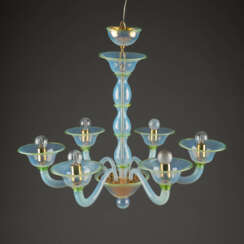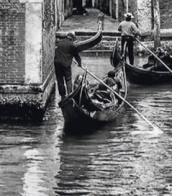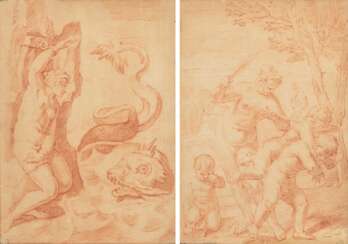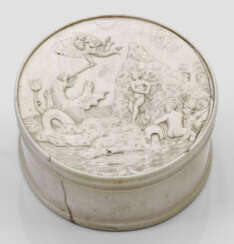andromeda

Luca Giordano, born on October 18, 1634, in Naples, emerged as the most celebrated Neapolitan painter of the late 17th century, known for his quick workmanship, which earned him the nickname "Luca Fa Presto" from his father's frequent admonitions to work quickly. His profound contribution to the development of Italianate landscape painting marked a significant chapter in art history.
Giordano's works are celebrated for their dynamic compositions, vibrant color palette, and the ability to infuse his subjects with vitality and emotion. His prolific career saw him working across Italy and Spain, leaving behind a legacy that includes monumental works such as the frescoes in the Palazzo Medici-Riccardi in Florence and the ceiling paintings in Santa Brigida Church in Naples. His late works, lighter and prefiguring the Rococo movement, were particularly influential and admired by later artists such as Fragonard.
Giordano's artistic prowess was not confined to a single genre; his oeuvre includes religious and mythological scenes, landscapes, and portraits. His versatility and ability to adapt his style to suit different subjects and patrons' preferences made him a pivotal figure in the transition from the Baroque to the Rococo style. Despite criticisms of superficiality due to his rapid execution, Giordano's work was fundamentally rooted in a deep understanding of his predecessors, combining the dramatic intensity of the Baroque with the emerging lighter Rococo aesthetic.
For collectors and experts in art and antiques, Luca Giordano's paintings represent a significant period in art history, bridging the gap between two major stylistic periods and reflecting the vibrant cultural exchanges of 17th-century Europe. His works, found in esteemed collections worldwide, continue to be studied and admired for their technical brilliance and artistic innovation.
To explore more about Luca Giordano's masterful contributions to the world of art and to stay updated on exhibitions or sales featuring his work, consider signing up for updates from art institutions. This subscription ensures enthusiasts and collectors are well-informed about developments related to Giordano's oeuvre, enhancing their appreciation and understanding of his enduring legacy.


Franz Gerhard von Kügelgen was a German painter of the late 18th and early 19th centuries. He is known as a portrait painter, famous for his portraits of political and public figures, scientists and artists.
Kügelgen was a professor at the Academy of Arts in Dresden and a member of the Prussian and Russian Academies of Arts. He created portraits of famous personalities of his time, such as Caspar David Friedrich, Johann Wolfgang Goethe, Friedrich Schiller and others. His works left a significant mark in the history of German art. His twin brother Carl von Kügelgen was also an artist.


Giuseppe Cesari was an Italian Mannerist painter, also named Il Giuseppino and called Cavaliere d'Arpino, because he was created Cavaliere di Cristo by his patron Pope Clement VIII. He was much patronized in Rome by both Clement and Sixtus V. He was the chief of the studio in which Caravaggio trained upon the younger painter's arrival in Rome.


Agostino Carracci, an Italian painter and printmaker born in 1557 in Bologna, is celebrated not just for his own art but also for his significant contributions alongside his brother Annibale and cousin Ludovico to the revitalization of Italian painting at the end of the sixteenth century. While Agostino's paintings are noteworthy, he is particularly distinguished as one of the premier printmakers of his era, producing high-quality reproductive engravings of works by renowned artists like Veronese and Tintoretto, as well as his original creations.
His collaborative work with Annibale on the frescoes for the gallery of the Palazzo Farnese in Rome is one of the notable highlights of his career, demonstrating the Carracci family's impact on the direction of Italian art towards a more realistic and classical style, countering the prevalent Mannerist tendencies of their time. His untimely death in 1602 in Parma curtailed a career that, through his engravings and teachings at the informal academy founded in Bologna with his relatives, influenced a broad swath of the art world, including future generations.
For art collectors and experts, Agostino Carracci's works offer a glimpse into a pivotal moment in art history, where a shift towards classical realism was being forged. His engravings and paintings remain a testament to his skill and a vital part of the narrative of Italian art's evolution.
To delve deeper into Agostino Carracci's world and stay informed about related artworks and auction events, signing up for updates is a proactive step. By subscribing, you'll receive tailored information about Agostino Carracci, ensuring you're always in the loop regarding new insights and opportunities in the realm of art and antiques related to this influential figure.






















































































